I think we all know of the existence of cave paintings, troglodyte houses and even underground cities, but it is rarer to have heard of rock-cut churches. However, there are; and, in the case of northern Spain, a few, to the point that you can even make a tourist route visiting them. This itinerary of cave temples, sanctuaries and hermitages is concentrated in three provinces (Palencia, Burgos and Cantabria) and reaches its maximum expression in the Valderredible Valley.
It shouldn't be that weird either. Drilling the rock to enable a space, either for housing, worship or burial, is something that dates back to ancient times; the catacombs of Rome (San Callisto, Domitilla...), the Egyptian hypogea and hemispheres (tombs of the Valley of the Kings, temples of Abu Simbel), the caves of India (Ajanta, Ellora and others) and China (Longmen) or the Troglodyte cities of Cappadocia (Derinkuyu, Kaymakli, etc) and Jordan (Petra) are some of the most famous examples, many of which we have already discussed here in previous articles.
What is really curious is the fact that, if the cave dwellings are usually located in the south for obvious climatic reasons (especially in the municipalities of Granada and Murcia, but also in Valencia, Madrid and Almería), the churches, with the occasional exception (for example, the Mozarabic one of Bobastro, in Malaga), are mainly spread over Cantabrian, Burgos and Palencia enclaves (although there are also in Álava and Galicia), most of them being located in a relatively small area. Something that facilitates your visit in just a couple of stages and allows, if desired, to extend the getaway to other areas; for example, to the beach of Ubiarco, where the hermitage of Santa Justa offers quite a spectacle, semi-excavated in the anticline of a geological fold.
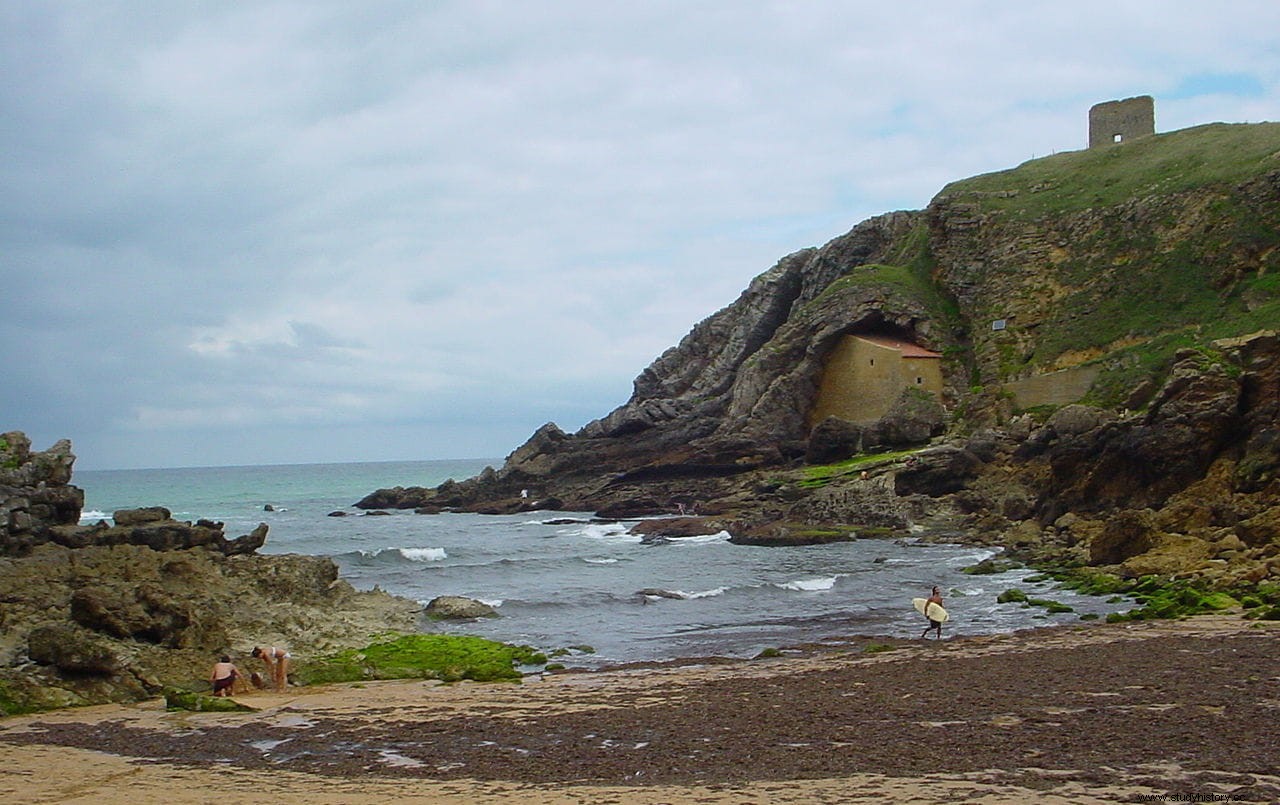
A good part of these unusual temples were built in the Middle Ages, in the context of the Muslim invasion and the subsequent process known as the reconquest, which explains why most of them are on the Cantabrian coast:the Islamic domain of the Iberian Peninsula was less there and, on the contrary, it became a refuge for Christians.
This border singularity, isolated and unstable, made it difficult to build buildings, whether defensive, or for settlements, or for liturgy, both due to the scarcity of means and the fact that they were destroyed in incursions, hence conditioning natural caves was a fast, cheap, discreet and durable solution.
Area of passage later for the settlers, also had to add the character of a hermitage that have several of these temples, as hermits and anchorites often chose caves for their contemplative existence, and inhabiting them required a minimum of adaptation.

And since they not only lived from what nature offered them but also from the charity of the people, they ended up going to those places as what they were de facto :prayer corners. Over time, not a few of these sites tended to lead to the establishment of monastic communities, especially during the High Middle Ages.
Hermitage of San Vicente
Approximately one kilometer from Cervera de Pisuerga, a Palencia municipality near Aguilar de Campoo, is one of those hermitages, that of San Vicente. Dating from the end of the 9th century and the beginning of the 10th, it is a sanctuary excavated on a limestone hillock - highly eroded, given the type of rock - and surrounded by a necropolis with twenty tombs, also carved into the stone.
Church of the saints Justo and Pastor
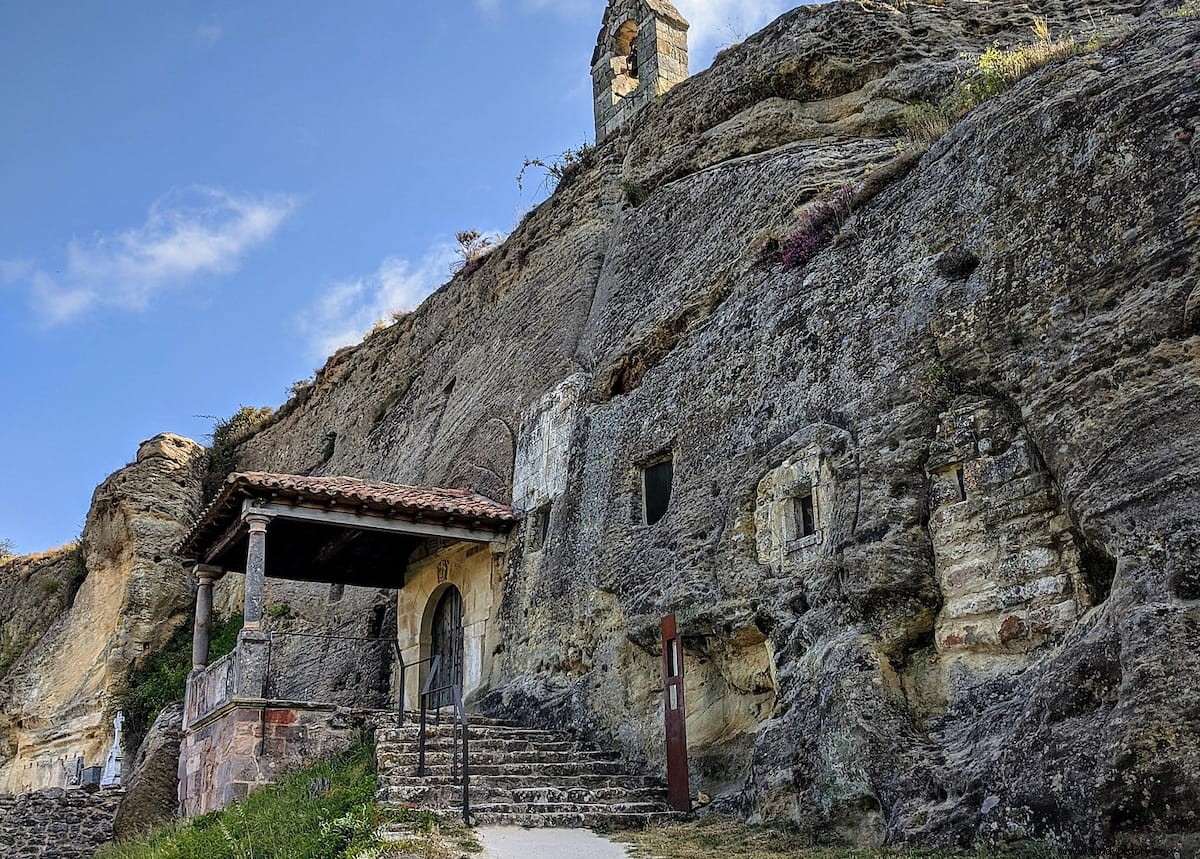
Half a dozen kilometers away, in Ollera de Pisuerga, Mount Cildá stands out, on one of whose slopes -in this case sandstone- is the church of Santos Justo y Pastor, which began to be built in the 7th century, although It had many later additions. It has a bell tower and a belfry that make it easy to see it, while its interior -in which masses are still officiated- is articulated in Romanesque style; there is also a necropolis.
Hermitage of San Pelayo
The next stop, five kilometers away, should be Villacibio, where you can visit the hermitage of San Pelayo (probably from the 10th century). Excavated on a promontory around the 10th century, it was already used to house hermits hundreds of years before, it has a more archaic appearance than the others, with its single nave and natural exterior (except for the closing grille). At eight hundred meters, a set of anthropomorphic tombs could be related to the place.
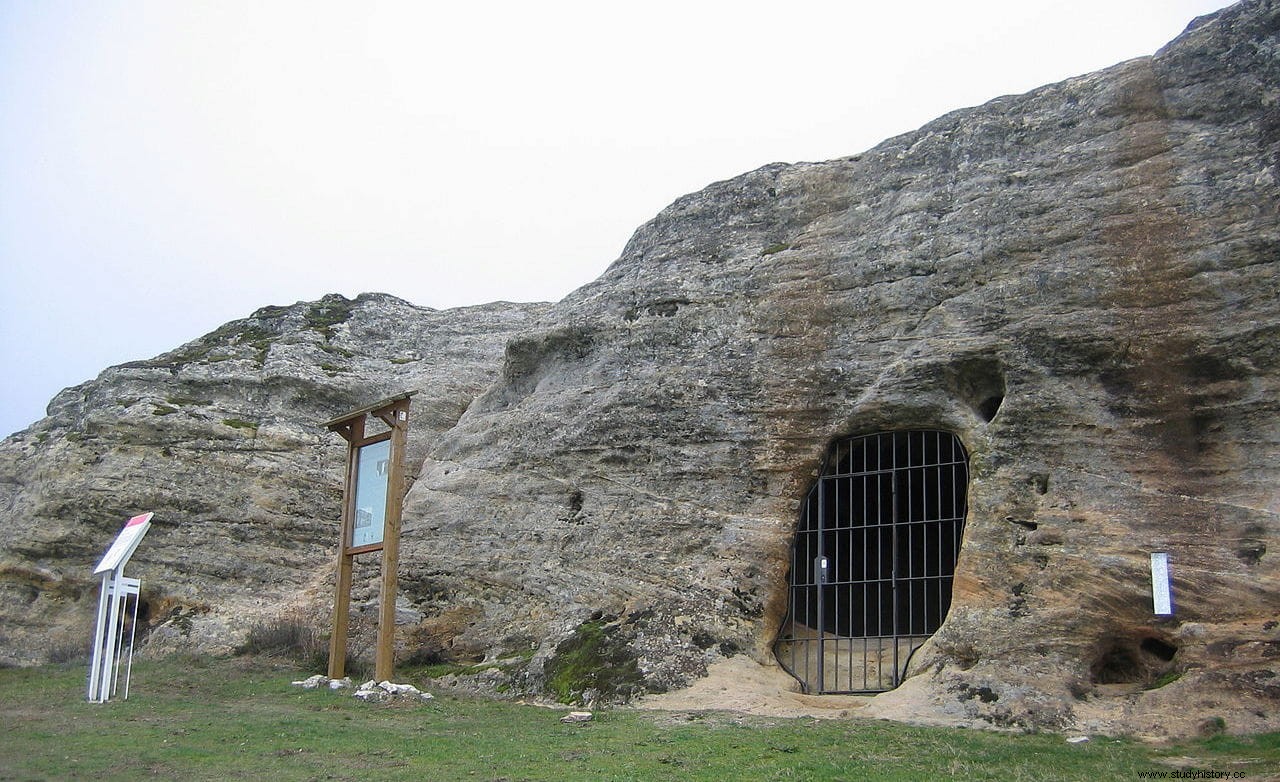
Church of San Martin
Further on, Villarén de Valdivia offers the church of San Martín (very deteriorated because it was used as a stable) and its necropolis, both perhaps from the 11th century. There were two other cave temples nearby, those of La Rebolleda and Pomar de Valdivia, but they were dynamited in the mid-20th century so that they would not hide bandits and maquis.
To all that has been mentioned, in Palencia we can add the hermitages of the Virgen Soterraña, San Vicente de Vado or San Martín and Ormita Peña (in Villarén de Valdivia), apart from more than twenty necropolises.
Church of Santa Maria de Valverde
That's where the tour of Palencia ends and we go on to Cantabria, where we find the Valderredible cave complex, the largest in Spain, with nearly fifty sites (not for nothing is it nicknamed the Iberian Cappadocia) thanks to the ease of work of its abundant sandstone rock.
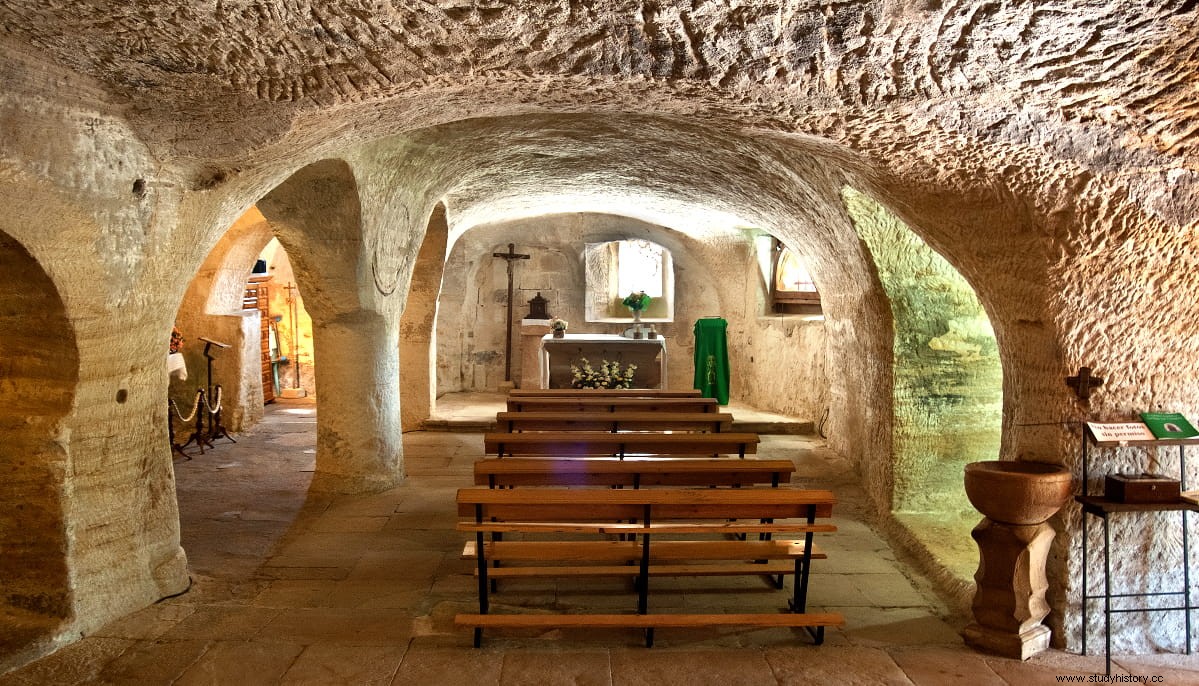
Probably the star should be considered the church of Santa María de Valverde, which is also the largest. of uncertain date and cataloged as an Asset of Cultural Interest (annex, it has an interpretation center), it is covered by a roof (to protect it from the rain), topped by a belfry and associated with early medieval tombs. Masses are still celebrated in its two vaulted naves.
Oratory of Santa Eulalia de Campo de Ebro
It is a simple one-nave oratory with an apse located next to the parish church and which, from the outside, with its ashlars and its barred window, looks more like a dungeon than anything else. Nearby, in La Puente del Valle, there is another equally modest one:San Pantaleón.
Oratorio de Cadalso
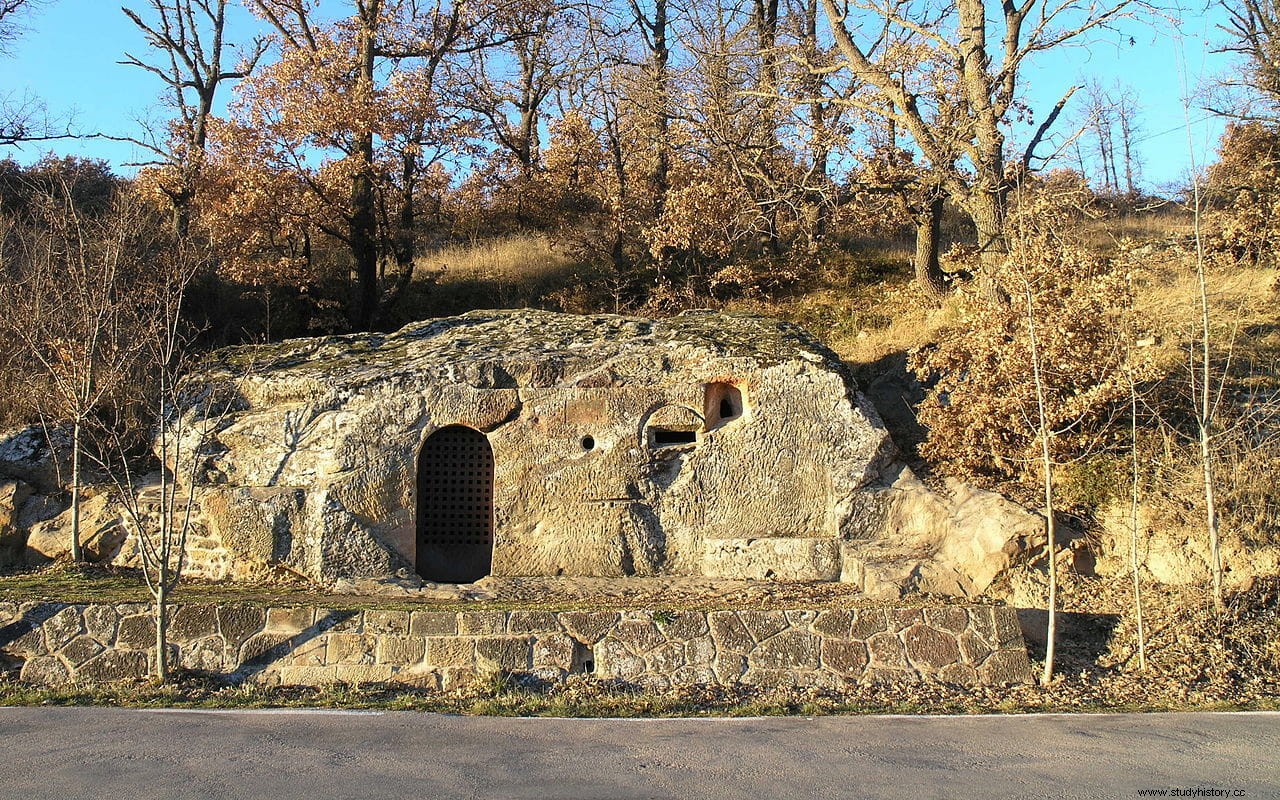
If the previous one looked like a dungeon, this one resembles a bunker:small but solid, with tiny openings, rectangular in shape with a single nave covered by a barrel vault and a higher apse. Outwardly, only the side belfry (and, if anything, a couple of early medieval tombs) indicates its religious character.
Church of Brooks
It is another of the churches highlighted by the two Mozarabic-style floors, connected by an internal staircase carved directly into the stone. Surely the upper floor was extended by a wooden gallery to accommodate more faithful. In any case, the careful details of the interior (horseshoe arch, counter-apse, quadrangular pillar) contrast with the rough exterior appearance, in which at first glance the hand of Man goes unnoticed.
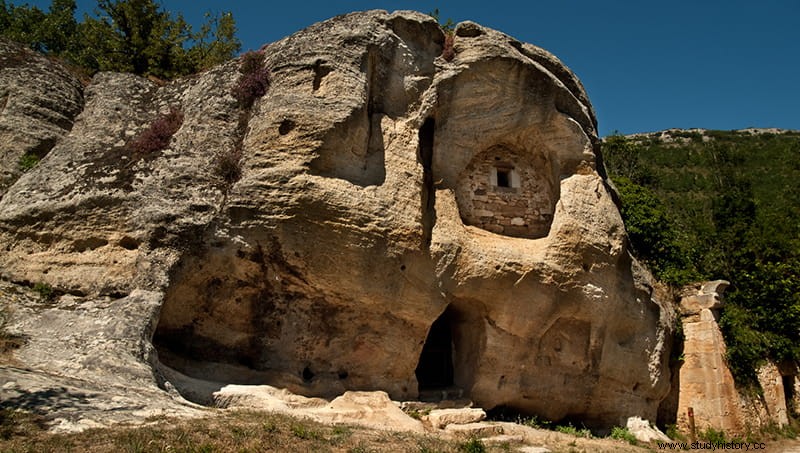
Cantabria also has a great heritage wealth of this type to add to what has already been stated:the churches of Arredondo, Campo de Ebro, Santo Toribio de Liébana, Cambarco and Ubiarco; the hermitages of Tobazo (Villaescusa del Ebro), Cuevatón (San Andrés de Valdelomar), Peña Castrejón and Peña Horacada (San Martín de Valdelomar); and the hermit complex of Los Ventanos (Villamoñico).
Hermitage of San Miguel de Bricia
Let's change another autonomous community to enter Burgos lands. Very shortly after Arroyuelos, we find the town of Presillas de Bricia. There, surrounded by an oak grove and excavated in a sandstone rock, stands a hermitage dedicated to San Miguel which, despite the effect of erosion and its state of abandonment, is also among the most attractive.
This is due to the fact that it has two floors, the lower one structured in three naves separated by two semicircular arches supported by columns, plus the corresponding apses, altars and niches, all of it made of stone. The upper floor is accessed via a staircase, also carvedin situ .
Hermitage of San Bernabé
Turning off to the east, on the northeastern limit of the province, we arrive at Ojo Guareña, a karstic complex with more than a hundred kilometers of galleries declared a Natural Monument and inhabited since prehistoric times. There is Merindad de Sotocueva where, taking advantage of a natural shelter of surrounding rock, the beautiful hermitage of San Bernabé was built, part by excavating the wall, part free.
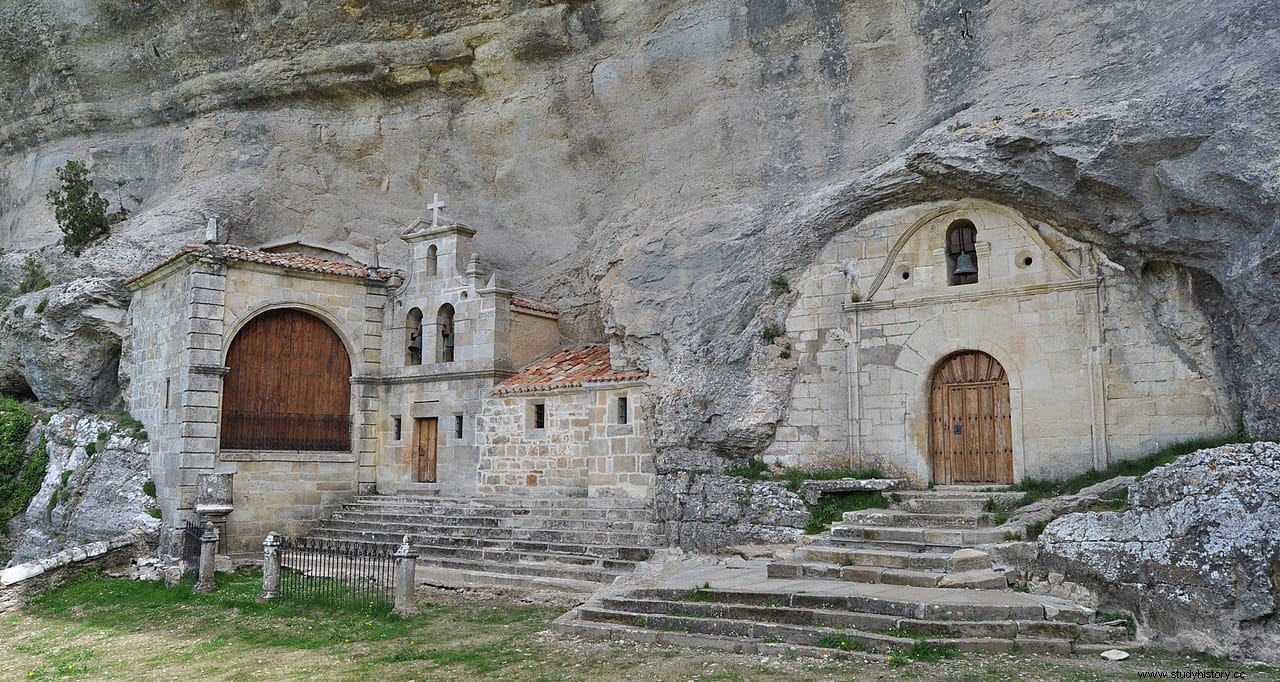
The monuments reviewed are, perhaps, the most representative and close to each other. But there are many more. In Burgos, specifically, there are the hermit complexes of Covarrubias, Las Gobas, Herrán and Castrillo de la Reina; the hermitages of San Pedro de Argés, Valpeñoso, La Gallega, San Andrés, Cueva de los Moros, Santa María de Garoña, Tartarés de Cilla and Ombenite; the hermitages of Santa Ana, San Sebastián and Nuestra Señora de la Peña; To all this we must add dozens of necropolises and caves.
